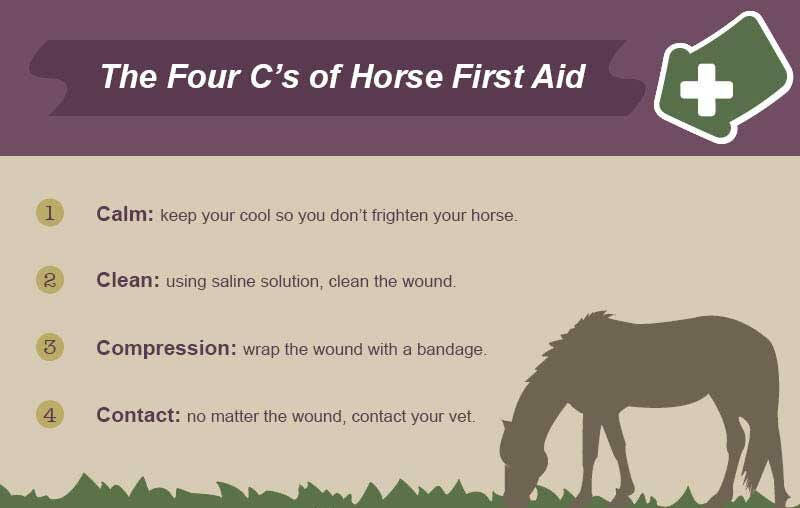Protect your pets: Common toxic plants to avoid
How to identify toxic plants and recognise signs of pet poisoning.
Read more16 September 2024
Throughout a horse’s life, it is inevitable that they will get scratched, bruised and cut at some point. More often than not, these wounds will heal quickly and cause no further problems. However, it is important to know what to do in the case of a wound and how to differentiate between serious cuts that need treatment and ones that will heal themselves.
Before you call a vet, you need to assess the wound to see if a vet is necessary and work out what you need to do in order to prevent further harm to the horse. Below are the steps you need to take when faced with a laceration, cut or open wound on your horse.
Seeing your horse in distress or with blood coming from a wound can put fear in any owner. It is important to keep your cool when around your horse in order not to frighten them further and create a larger wound or more cuts and lacerations.
The open wound will need to be cleaned up in order to stop any bacteria forming and to allow a good look at the wound. To do this, use a sterile saline solution (water can be used although not as effective) and a cloth to dab and wipe away any dirt or dried up blood. It is best to use more saline solution rather than less as it will wash away any unwanted bacteria and hopefully take it away from the horse and towards the ground.
Now that the cut is cleaned up, it can be thoroughly assessed. If the horse is acting normal, there’s a huge chance that the wound is nothing to worry about and should heal itself. However, if they seem distressed or the blood from the wound does not stop, you may have to act further on this as well as calling a vet.
Depending on the severity of the wound and the area on the horse’s body, your first aid may suffice although a vet may be a safer option. If the wound is on the horse’s legs, you can assess how deep the cut is by using a Q-tip (if this causes discomfort in the horse, stop immediately).
Once you have determined the depth, applying a self-adhesive bandage around the leg can stem the bleeding and help protect against infection. Do not try to pull out an object that may be lodged in the horse as this can cause further harm.
Normally when seeing a wound on your horse, you are inclined to act as quickly as possible. This can involve cleaning and bandaging the wound, however it is also important to contact the vet immediately due to infections or other implications these wounds can cause.
Even the smallest scratches and cuts can lead to an infection and decline the health of your horse, or there may be something caught in the wound that needs to be removed. No matter the circumstances, call your vet and either talk with them over the phone about your next step or get them to come and take a look themselves.

Most wounds will heal once you have administered first aid or the vet has come and patched up your horse. Whether it is from barbed wire, nails, fencing, glass, metal or sharp objects, they will find a way to step on it or rub against it. This is why it is always important to have a horse first aid kit on hand that includes:
The best way to prevent further cuts and lacerations is to check your pasture and fences for anything that may be causing these injuries. There’s no way to stop horses from getting wounds, you can only manage the objects and equipment they are exposed to on a daily basis. Remember to let them heal and intermittently check on their wound over the couple of days/weeks after the initial finding.